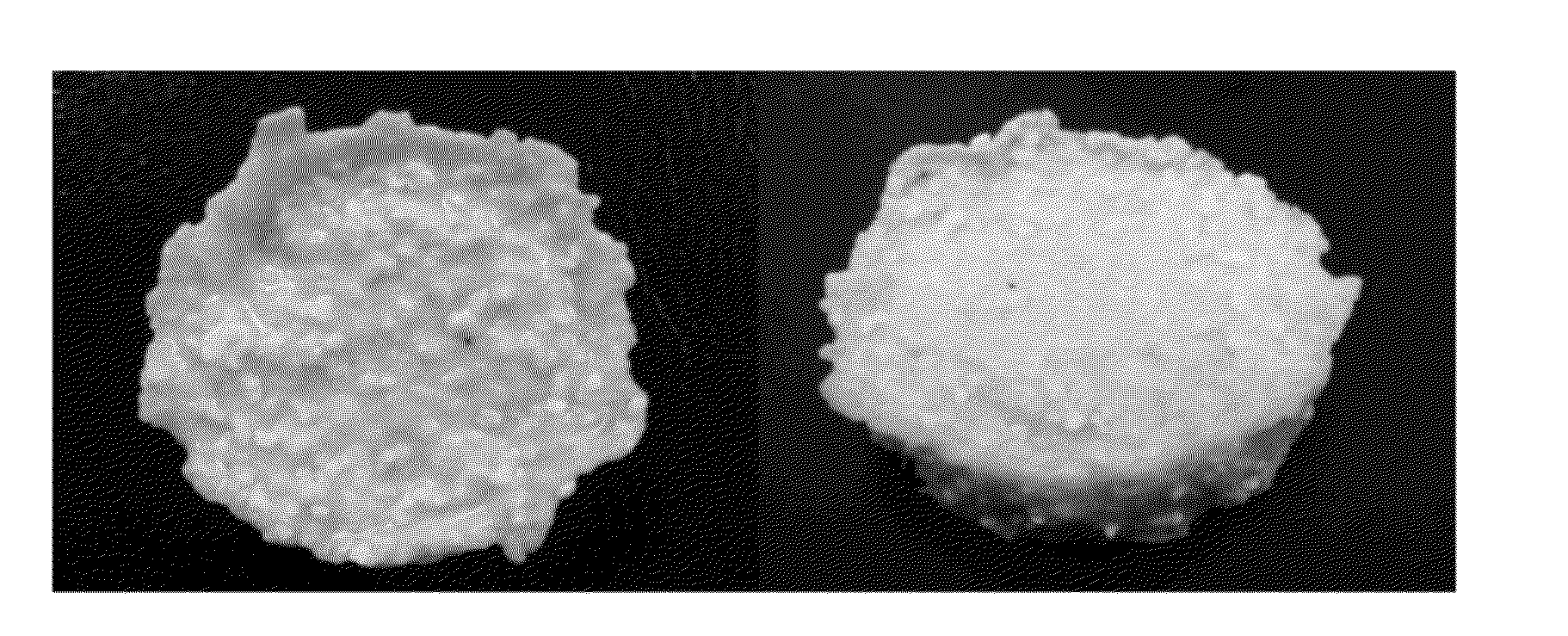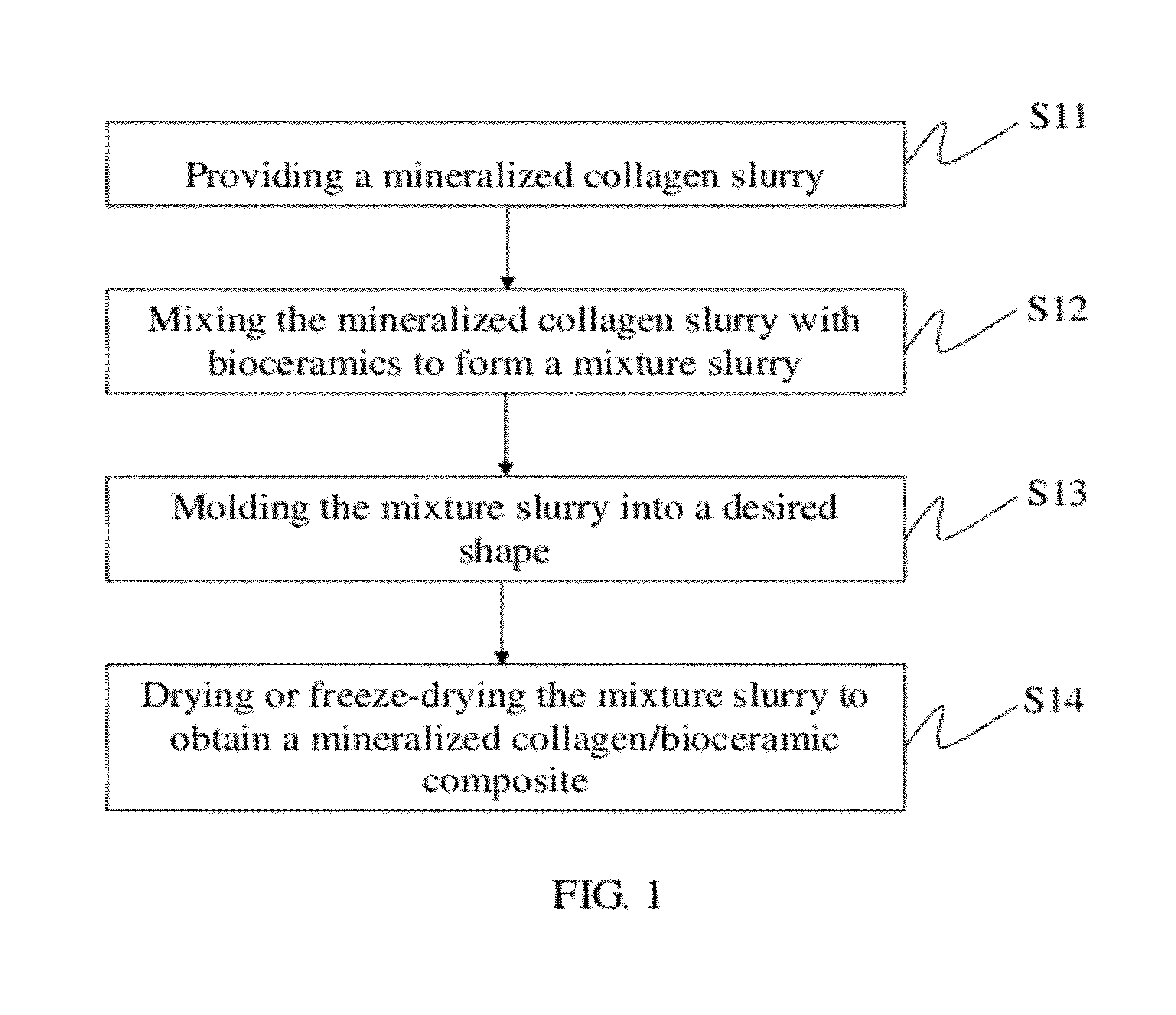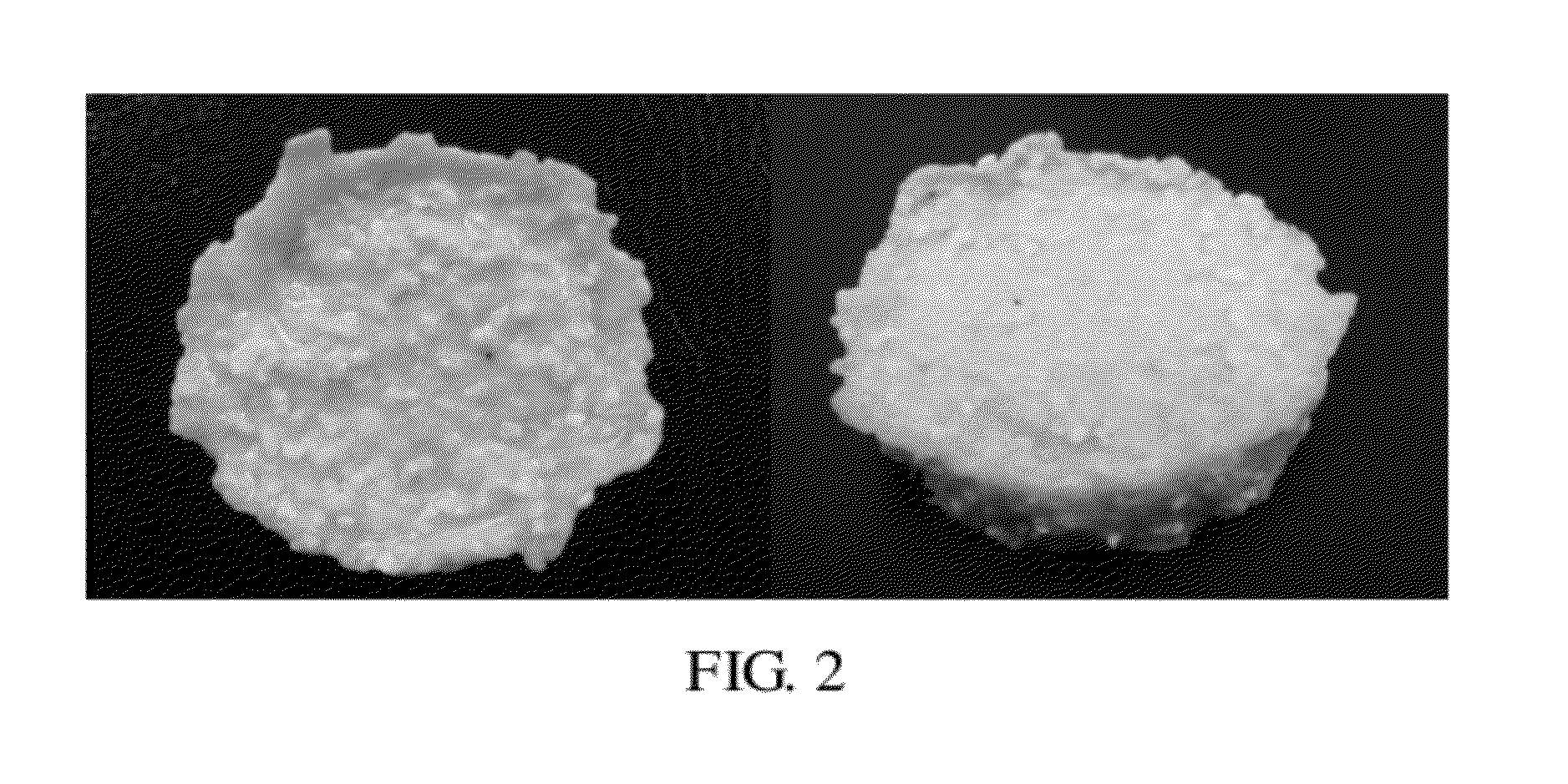Mineralized Collagen/Bioceramic Composite and Manufacturing Method Thereof
a bioceramic and collagen technology, applied in the field of composites, can solve the problems of affecting the application of precipitated ha in the medical field, affecting the application of precipitated ha, and affecting the resorption rate of collagen, etc., and achieves excellent biocompatibility and controllable volume swelling ratio, bioresorption rate, and mechanical strength.
- Summary
- Abstract
- Description
- Claims
- Application Information
AI Technical Summary
Benefits of technology
Problems solved by technology
Method used
Image
Examples
example 1
[0039]Preparation of Mineralized Collagen Slurry: 1 g of solid fibril collagen (type I collagen) is added into a container with 250 ml of pure water. 5.3 g of Na3PO4.12H2O is added into the water. The aqueous mixture is then stirred (mixed) in a blender until the collagen is in the form of homogeneous gel slurry. The pH value of the collagen is higher than 10.
[0040]3.54 g of Ca(NO3)2.4H2O is dissolved in 50 ml of pure water to form a calcium nitrate solution. The collagen slurry is kept in the blender and stirred vigorously when the Ca(NO3)2 solution is poured into the collagen slurry. The stirring is continued for several more minutes and then kept unstirred for one hour. The final pH value of the collagen slurry is still maintained near 10 or higher after the reaction. The slurry is then filtered with a separation funnel and washed several times with pure water until it is free of soluble impurities. If HA is the calcium phosphate deposited in the collagen and no weight lost durin...
example 1-1
[0042]One half of the above purified mineralized collagen slurry is mixed with 5 g of HA granule with a particle size between 0.5 mm and 2 mm. The mixed mineralized collagen is then shaped into a rectangular shape and air dried at room temperature. The dried mineralized collagen / HA ceramic composite has weight 6.25 g (1.25 g mineralized collagen and 5 g HA granule, i.e. 20% mineralized collagen and 80% HA). This composite material stays strong and does not show sign of disintegration after aging in water for several weeks.
example 2
[0043]Preparation of Mineralized Collagen Slurry: 0.5 g of solid fibril collagen (type I collagen) is added into a container with 100 ml of pure water. 5.0 g of Na3PO4.12H2O is added into the water. The aqueous mixture is then stirred (mixed) in a blender until the collagen is in the form of homogeneous gel slurry. The pH value of the collagen is higher than 10.
[0044]2.53 g of Ca(NO3)2.4H2O is dissolved in 50 ml of pure water to form a calcium nitrate solution. The collagen slurry is kept in the blender and stirred vigorously when the Ca(NO3)2 solution is poured into the collagen slurry. The stirring is continued for several more minutes and then kept unstirred for one hour. The final pH of the collagen slurry is still maintained near 10 or higher after the reaction. The slurry is then filtered with a separation funnel and washed several times with pure water until it is free of soluble impurities. If HA is the calcium phosphate deposited in the collagen and no weight lost during th...
PUM
| Property | Measurement | Unit |
|---|---|---|
| Fraction | aaaaa | aaaaa |
| Fraction | aaaaa | aaaaa |
| Fraction | aaaaa | aaaaa |
Abstract
Description
Claims
Application Information
 Login to View More
Login to View More - R&D
- Intellectual Property
- Life Sciences
- Materials
- Tech Scout
- Unparalleled Data Quality
- Higher Quality Content
- 60% Fewer Hallucinations
Browse by: Latest US Patents, China's latest patents, Technical Efficacy Thesaurus, Application Domain, Technology Topic, Popular Technical Reports.
© 2025 PatSnap. All rights reserved.Legal|Privacy policy|Modern Slavery Act Transparency Statement|Sitemap|About US| Contact US: help@patsnap.com



